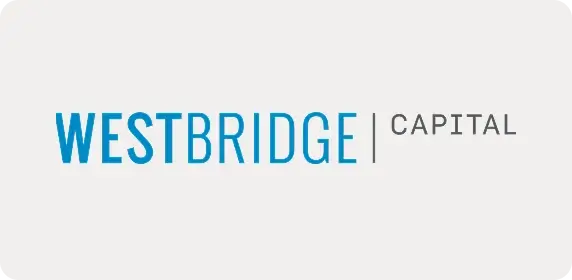“Product-Led Growth might be buzz-wordy right now but this is going to just be called ‘good business’ very soon.”
~ Val Geiser, Digital Strategist
Two Jewish men, Mark Levine, 56, and Michael Dubin, 33, met at a party in 2010.
They griped about the steep price of razor blades – thanks to the unnecessary features, expensive packaging, advertising expenses, and store overheads. That coupled with the inconvenient buying process, they realised that they had spotted a problem worth shaving off.
Dubin and Levine started working on the Dollar Shave Club full-time by January 2011.
Dollar Shave Club offered high-quality razor kits on a monthly subscription basis for dirt cheap. By designing, producing, and shipping the products in-house, they were able to sell it for almost half the price of the industry giants like Gillette.
With a compelling value proposition and a viral launch video, they sold out their first batch of 2,50,000 razors on the first day. Fast forward to 2016, Dollar Shave Club got acquired by Unilever for $1 billion, when their annual sales was approaching $200 million. A silky smooth success story.
Dollar Shave Club is a classic case of product-led growth. While the video did give it the initial push, what still keeps the company on a steady growth trajectory is its product.
“Product-Led Growth is defined as a go-to-market strategy that relies on using your product as the main vehicle to acquire, activate, and retain customers.
~ Wes Bush, Author, Product-Led Growth
Unlike sales-led companies where the whole goal is to take a buyer from Point A to Point B in a sales cycle, product-led companies flip the traditional sales model on its head. Product-led companies make this possible by giving the buyer the “keys” to use the product and helping them experience a meaningful outcome while using the product. At this point, upgrading becomes a no-brainer.”
Dollar Shave Club pulls off the three core elements that Wes believes are necessary for a strong product-led foundation:
The product is in tune with user needs.
Dollar Shave Club disrupted the industry with a low-cost, personalized, online subscription model that ships razors right to the customers’ doors. A simple, straightforward promise to solve a then-overlooked but nagging problem.
The product is the acquisition engine.
With features like the risk-free personalized starter set, flexible shipment option, 30-day money-back guarantee, and the ability to cancel anytime, they gave users an easy way in, and the flexibility to try out the product on their own terms.
The product is also the retention engine.
At the time of their launch, Gillette owned 70% of the razor sales in the US. By 2018, Dollar Shave Club and Harry’s, its rival startup launched a year later, won over 14% of the market. When the perceived value aligns with the experienced value, the customers return the favour. Case closed.
Like Wes, we at SaaSBOOMi also believe that product-led growth holds the key to the future of SaaS. We want to enable Indian SaaS companies to join the product-led movement, and we’re kickstarting our journey (and yours too, we hope) with this MRR edition.
Dive in!
~ Sadhana
On behalf of Team SaaSBOOMi
Engage
Product-Led Growth Series – by SaaSBoomi Product | 28th November 2020
Presenting Chapter One of the PLG Series scheduled on November 28th from 9:30 AM to 1:30 PM IST. The goal is to help you learn how to:
- Implement PLG to grow with favorable economics
- Integrate PLG with different functions of your business at different stages
- Build your PLG team and how to do goal-setting for PLG efforts
- Leverage PLG and the concept of product-qualified leads to accelerate your sales performance
Think this would benefit you? Apply here
Latest on the SaaSBoomi Blog
- Consumerization of B2B Design
How to leverage Design as a competitive advantage? Vijay Saradhi distills his learnings from the session led by Bharath Balasubramanian, Sr. Director of Design at Freshworks. - Why User Emulation Should Be a Function in Every Product Team
Karthik Pasupathy explains how User Emulation helps product teams deliver a consistent and superior user experience. - SaaS That Targets India Does Not Scale
Adam Walker writes a 4-part series to provide SaaS founders with a critique of the Indian market, and to encourage them to pivot their sales and marketing toward the Global market.
Latest on the SaaSBoomi Podcast
- A Masterclass in Bootstrapping, Learning, and Staying Happy with Kumar Vembu
Kumar Vembu, founder & CEO of GoFrugal, offers insights in bootstrapping, spotting talent, and matching them with their true purpose, and lessons from his three different entrepreneurial journeys – Zoho, GoFrugal, and Freshworks. - Inside Innovaccer’s Journey to $100 Million ARR; Bold Pivots and Relentless Learning
Abhinav Shashank, CEO of Innovaccer, talks about managing bold pivots almost like changing the engines of a plane while still in the flight, and staying bluntly honest to create a $100 million ARR business.
From the Community

Matthew, our product champion. He plays a pivotal role in building the SaaSBOOMi Product, our latest initiative. He’s also a core contributor to the SaaSBOOMi Playbook and the soon-to-be-launched SaaSBOOMi Founder Tribe. Matthew also volunteers as a Football coach at Just For Kicks. He’s a psychology enthusiast as well, and has even earned an MA in that field from IGNOU, purely out of interest. A truly versatile set of passions, we must say. And their common thread is just as interesting.
"At the core of it all, I'm deeply fascinated about how a team works together and creates an outcome larger than life; something that they couldn't have accomplished individually.
The psychology of team dynamics. The very DNA of the game of Football. The spirit of the SaaSBOOMi community. Essentially, it's all about how the whole is greater than the sum of its parts."

























